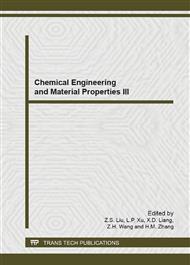[1]
R.W. Hoffman, In: Wilsdorf HGF, editor. Thin films. Metals Park(OH): American Society of Metals; (1964).
Google Scholar
[2]
H. Mizubayashi, K. Fujita, K. Fujiwara, H. Tanimoto, J. Metastable Nanocrystalline Mater. 24-25 (2005) 61.
Google Scholar
[3]
N. Yagi, A. Ueki, H. Mizubayashi, H. Tanimoto, J. Metastable Nanocrystalline Mater. 24-25 (2005) 503.
DOI: 10.4028/www.scientific.net/jmnm.24-25.503
Google Scholar
[4]
B.S. Berry, A.C. Pritchet, J. Phys. 42 (1981) C5-1111.
Google Scholar
[5]
S. Sakai, H. Tanimoto, K. Otsuka, T. Yamada, Y. Koda, E. Kita, H. Mizubayashi, Scripta Mater. 45 (2001) 1313.
DOI: 10.1016/s1359-6462(01)01167-8
Google Scholar
[6]
M.J. Kobrinsky, C.V. Thompson, J. Appl. Phys. 89 (2001) 91.
Google Scholar
[7]
D. Gan, P.S. Huang, J. Leu, J. Maiz, T. Scherban, J. Appl. Phys. 97 (2005) 103531.
Google Scholar
[8]
J. Peng, V. Ji, J.M. Zhang, W. Seiler. Materials Science Forum. 524-525 (2006) 595.
Google Scholar
[9]
K.N. Tu, J. Appl. Phys. 94 (2003) 5451.
Google Scholar
[10]
C.S. Hau-Riege, Microelectron. Reliability 44 (2004) 195.
Google Scholar
[11]
W.Y. Hu, M. Fukumoto. Modeling Simu. Mater. Sci. Eng., 10 (2002) 707.
Google Scholar
[12]
W.Y. Hu, B.W. Zhang, B.Y. Huang, et al. J. Phys. : Cond. Matt., 13(6) (2001) 1193.
Google Scholar
[13]
W.Y. Hu, B.W. Zhang, X.L. Shu, et al. J. Mater. Sci. & Tech., 15 (1999) 336.
Google Scholar
[14]
H.Q. Deng, W.Y. Hu, X.L. Shu, et al. Appl. Surf. Sci., 221 (2004) 408.
Google Scholar
[15]
R.A. Johnson. Phys. Rev. B, 39 (1988) 3924.
Google Scholar
[16]
R.A. Johnson. Phys. Rev. B, 39 (1989) 12554.
Google Scholar
[17]
R.A. Johnson. Phys. Rev. B, 41 (1990) 9717.
Google Scholar
[18]
S.M. Foiles, M.I. Baskes, M.S. Daw. Phys. Rev. B, 33 (1986) 7983.
Google Scholar
[19]
S.M. Foiles, M.S. Daw. Phys. Rev. B, 38 (1988) 12643.
Google Scholar
[20]
F.S. Liu, W.Y. Hu, H.Q. Deng, et al., Modelling Simul. Mater. Sci. Eng., 18 (2010) 045010.
Google Scholar
[21]
F.S. Liu, W.Y. Hu, H.Q. Deng, et al., Computational Materials Science. 47 (2009) 505.
Google Scholar
[22]
F.S. Liu, W.Y. Hu, H.Q. Deng, et al., Nuclear Instruments and Methods in Physics Research Section B. 267 (2009) 3267.
Google Scholar
[23]
B.W. Zhang, Y.F. Ouyang, Phys. Rev. B, 48 (1993) 3022.
Google Scholar
[24]
B.W. Zhang, Y.F. Ouyang, S.Z. Liao, Z.P. Jin, Phys. B, 262 (1999) 218.
Google Scholar
[25]
X.L. Shu, Study on the physical properties, point defects and atomic diffusion in intermetallics by a modified analytic EAM model, Ph.D. Dissertation, 2001, Hunan University, Changsha, P. R. China.
Google Scholar
[26]
C.J. Smithells, in: E. A. Brandes (Ed. ), Smithshells Metals Reference Book, sixth ed, Butterworths, London, (1983).
Google Scholar


